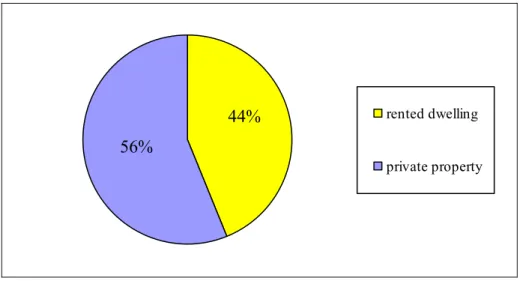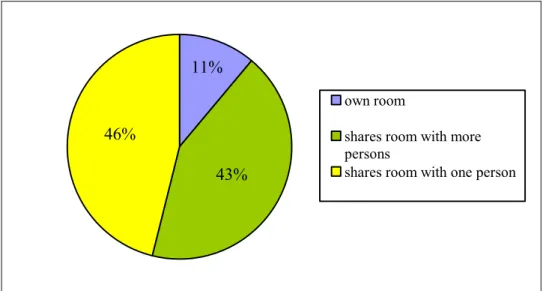OPINIONS OF THE INHABITANTS OF THE JIU VALLEY
MINING AREA REGARDING FAMILY LIFE QUALITY
MIHAELA CAMELIA SCHMIDT
*ABSTRACT: The paper provides regarding an analysis of the perception of the Jiu Valley inhabitants regarding different aspects of family life quality, as a result of an empirical study that is part of an extensive research conducted in the Jiu Valley mining area. This research is an attempt to decipher and analyze the complex problems of the families in this monoindustrial area, generated by the dramatic economic and social changes pertaining to the transition period.
KEY WORDS: family life quality; economic and social problems; economic and social restructuring; economic and social changes; transition.
JEL CLASSIFICATION:A; A14.
This paper is based on an empirical study that is part of an extensive research conducted in the Jiu Valley mining area, regarding the way in which local people perceive certain aspects of family life quality. Throughout the years, my research has focused on perception and self – perception within these families, describing, analyzing and interpreting the opinions of the subjects on certain significant aspects of their own family life.
The study is based on a survey conducted on 500 families in the towns of the Jiu Valley, namely: Petroşani, Petrila, Aninoasa, Vulcan, Lupeni and Uricani. The total number of households under investigation is 51,740, and the number of individuals belonging to these households is 145,6411.
The research methodology used in this study is complex. Besides the field research that involves the direct, face – to – face sociological inquiry, under the form
*
Lecturer, Ph.D., University of Petroşani, Romania, schmidtcamelia@yahoo.com
1
of the interview and direct inquiry, other methods were also used, such as the documentation and the observation during the interviews, which ensured the recording of the responses and non – verbal reactions of the subjects while they were expressing their opinions and intentions. The subsequent analyses led to a series of conclusions on the life quality of the families in the area regarding: family health, living conditions, the income – expenses ratio, poverty, unemployment, family and neighbourhood relations, and others.
1. APPRECIATION OF LIFE QUALITY OF THE FAMILIES IN THE JIU VALLEY
The analysis of the satisfaction of the subjects regarding different aspects of life (table 1) reveals that family satisfaction holds the first place in the hierarchy, very much ahead of other aspects. Family relations offer satisfaction to most of the subjects, 85% of them appreciating these relations as good and very good.
Table 1. Appreciation of family relations and other aspects (%)
Good and very
good Satisfactory Bad and very bad
Health 54.2 28.8 17
Family relations 86 10.2 3.8
Household 72.8 17.6 9.6
Neighbourhood relations 77 17 6
Family income 31.2 28.2 40.6
The further analysis of other aspects of life outlines a family model in which inner and outer relations are good and very good, living conditions are acceptable or satisfactory, but family income is appreciated as low or very low. Almost a quarter of the subjects appreciate that the monthly income of the family does not cover even the strict necessities, most of them consider that it covers just the strict necessities or a fairly decent living (decency being perceived much below the limits of real decent life) not enabling them to make expensive purchases (luxury clothes, furniture, etc.), 15% of the subjects manage to buy more expensive objects with great sacrifices, and only 12% can afford „luxury” without sacrifices.
The subjects under investigation appreciated the Jiu Valley as a problematic area. On the whole, they consider that the most serious problems are the following: poverty, unemployment, corruption, downsizing, criminality and child abandonment (table 2).
Table 2. The most serious problems of the Jiu Valley at present (%)
First choice Second choice* Cumulated choices
Poverty 57.6 16.6 74.2
Unemployment 17 37.4 54.4
Corruption 11.6 20 31.6
Downsizing 8.2 13.2 21.4
Criminality 1.8 8 9.8
Child abandonment 3.8 4.4 8.2
The subjects identify the poverty specific to the whole area as the most serious in the hierarchy of family problems (table 3).
Table 3. The main problems faced by the families in the Jiu Valley* (%)
First choice Second choice Third choice Cumulated choices Financial problems 51 24.4 12 87.4
Job instability 12.2 22 33.6 67.8
Unemployment 19.2 13.4 17.4 50
Lack of dwellings 10.2 14.2 12.8 37.2 Medical problems 3 17.8 15.6 36.4 Lack of leasure time 4.2 7.8 8.2 20.2
* Differences up to 100% (in small proportions) represent the „other/others” choice.
The financial problems of the families in the Jiu Valley are followed, as shown in the table, by a justified fear of job instability, generated by the high level of unemployment in the area and by continuous downsizing. Therefore, financial problems, job instability and unemployment are the permanent problems of the inhabitants of the area.
3,3%
6,1%
9,7%
11,5%
69,4%
0 20 40 60 80 100
financial problems Social problems medical problems lack of information în
the field psychological
problems
Figure 1. Problems faced by the HIV/AIDS affected families
In families with a child with AIDS or HIV infected, special attention should be paid to the living conditions and environment. Almost half of the affected families live in rented dwellings and the living space is insufficient for the number of family members.
56%
44% rented dwelling
private property
Figure 2. Status of the dwellings of HIV/AIDS affected families
11% of the ill children have their own room, the others sharing their space with one or more persons most of the time. Under these circumstances, it is natural that attending to the needs of an HIV/AIDS affected child is far more difficult, the child not being able to benefit to „enjoy” the peace and the „horizon” that specialists (doctors, psychologists, sociologists) consider essential for an adequate life, as the persons affected by this disease, and especially children, have certain seizures during which crowding should be avoided.
11%
43% 46%
own room
shares room with more persons
shares room with one person
Figure 3. Room sharing
Lack of leisure time does not seem to be a problem at all for the inhabitant of the area, whether they work or not, as the possibility of a second job is extremely limited, the more so it is impossible to employ even the persons who are not involved in the economic environment of the Valley.
By knowing and outlining clearly the local family problems, we have tried to find out what future threats the subjects perceive (table 4):
Table 4. Future threats perceived by the subjects and their families* (%)
First choice Second choice Cumulated choice
Poverty 17.2 20 37.2
Taxes 15.6 21.4 37
Price growth 15.8 19.4 35.2
Disease 24 7.2 31.2
Unemployment 14.2 13.6 27.8
Corruption 6.2 8.6 14.8
Instability 5.6 6.6 12.2
Other/others 1.4 3.2 4.6
As it can be expected, the Jiu Valley inhabitants feel themselves threatened primarily by poverty in the future. The fear of the subjects of a continuous price and tax growth, when the average income barely covers the basic necessities or decent living, derives precisely from their actual state of poverty. Unemployment is situated this time only on the fifth place in the hierarchy of future threats for the subjects and their families, being outranked by disease. These aspects can be interpreted from several points of view:
- hopefully, these people, desperate and discouraged by their present situation, may still have the power to hope that the Jiu Valley will offer new jobs and improve the existing ones in the future, so that unemployment will no longer represent the stigma we are all bearing at this moment;
- on the other hand, this hope is automatically shadowed by the justified fear the low living standard, the poverty specific to the region and the continuous growth of prices, (including household expenses) will lead to a worsening of the situation, with possible medical effects. If today these people ignore, or play down the importance of medical problems, they will end up by being painfully aware of it;
- corruption, homocide, criminality or other widely popularized aspects of national interest do not represent a special problem for the inhabitants of the Jiu Valley, as long as they feel helpless in front of their own everyday problems that overwhelm them more and more.
Precisely the number and gravity of these problems may lead to the orientation of our subjects towards family life, the latter being for them a refuge where they can find peace and satisfaction. The hard life of these families can be a unifying factor for the family members.
Other questions revealed that most of the population considered that life before 1989 was good to very good. For almost half of the population, material conditions between 1990-1997 was appreciated as good to very good, with a significant decline after 1997 and deep dissatisfaction nowadays.
Although this is a positive signal, actually it is a highly subjective assessment that almost disregards such an objective element as the monthly family income in the Jiu Valley. Thus, we have concluded that, in time, due to the difficulties it had to cope with, the population ended up by overrating their lifestyle when they are offered something, no matter of what value.
To reinforce the above mentioned, we mention that we have come across numerous cases when families of four, five or more members appreciated their living as good to very good (not acceptable, on the limit of decency), each member of the family having an income close to the minimal guaranteed income.
of the quality of their material life when provided with something (social or emergency support).
By correlating the numbered of employed persons with the category of
monthly family income, we conclude that there are cases when none of the
family members works, but the family still has a certain income. Far from being
impossible, this situation has several explanations
. The most plausible one is that one person in the family works abroad, sending money back home. Another explanation is that of seasonal jobs, the minimal guaranteed income, etc. Working on the black market can also provide an explanation. The following detailed situation validates and supports these hypotheses:31,6%
3,10% 0,4% 0,70%
16,5% 47,7%
0% 20% 40% 60% 80% 100%
I don't do anything to improve my
income
No, although I would like to, but there
is no possibility
I do occasional
activities
Second job I rent Others
Figure 5. Initiative for income improvement
according to the population’s belief, no longer needed people able to work, conferring to them new statuses, such as: layoffs, unemployed, poor.
REFERENCES:
[1]. Ancuşa, M.; Maniac, E.; Petrui, I.D. (2000) Fenomene demografice şi socio-economice. Tratare pluridisciplinară, Editura „Sigma Plus”, Deva
[2]. Fodor, D.; Baican, G. (2001) Impactul industriei miniere asupra mediului, Editura Infomin, Deva
[3]. Chelcea, S. (2007) Metodologia cercetării sociologice. Metode cantitative şi calitative, Editura Economică, Bucureşti
[4]. Cojocaru, M. (2003) Asistenţa şi protecţia socială la nivelul pieţei muncii în România,in Neamţu, G. (coord.) Tratat de Asistenţă Socială, Editura Polirom, Iaşi
[5]. Stegăroiu, D. (1993) Şomajul, prezent şi perspective, Universitatea „Babeş–Bolyai”, Cluj–
Napoca
[6]. Zamfir, C.; Vlăsceanu, L. (coord.) (1993) Dicţionar de sociologie urmat de indicatori demografici, economici, sociali şi sociologici, Editura Babel, Bucureşti
[7]. *** Ordonanța de Guvern nr. 116/2010
[8]. *** Program de reorganizare și restructurare a Companiei Naționale a Huilei S.A. pe anul 2011 – Proiect



